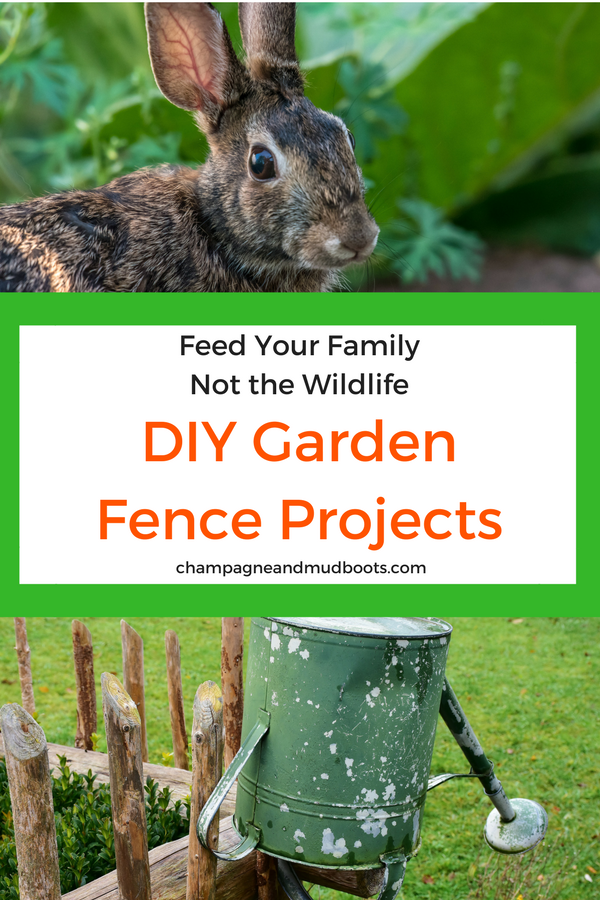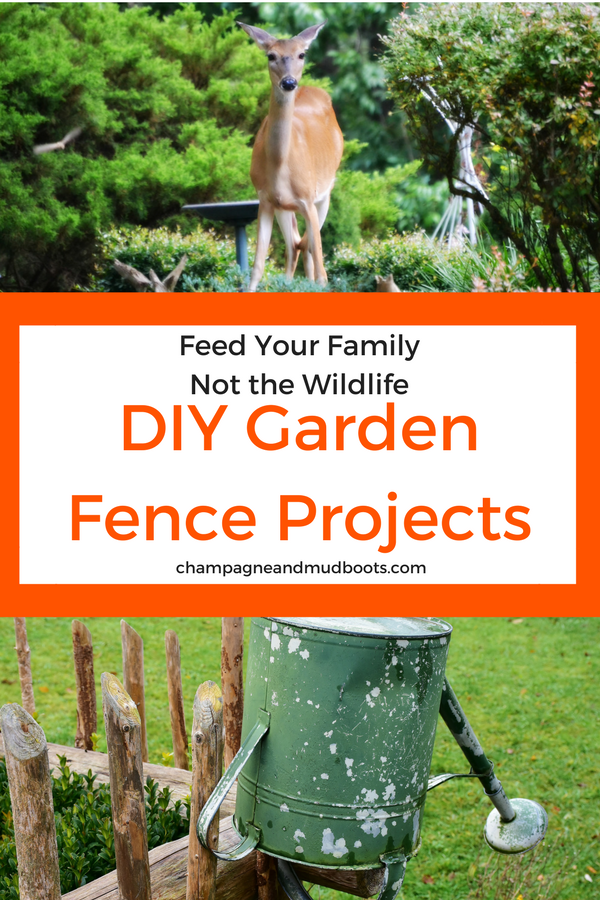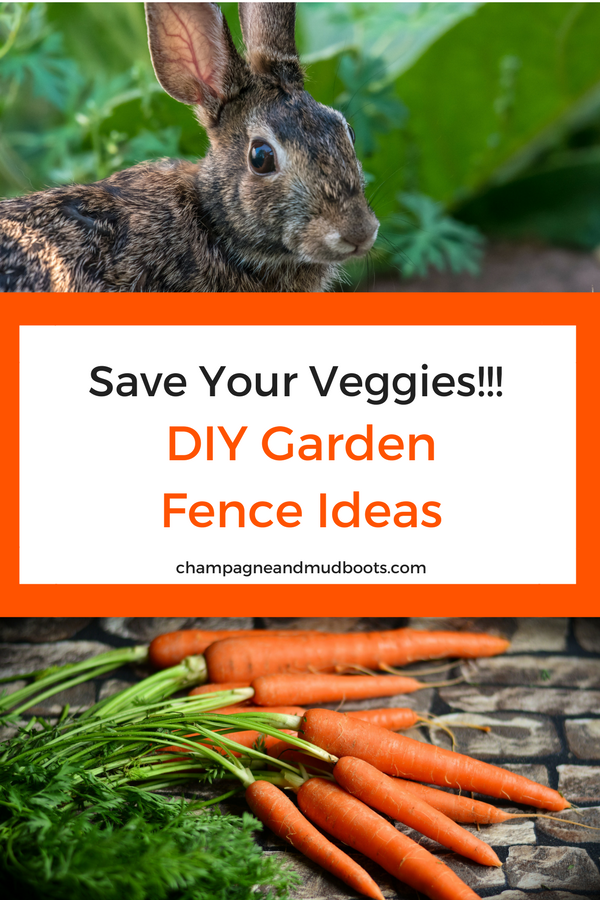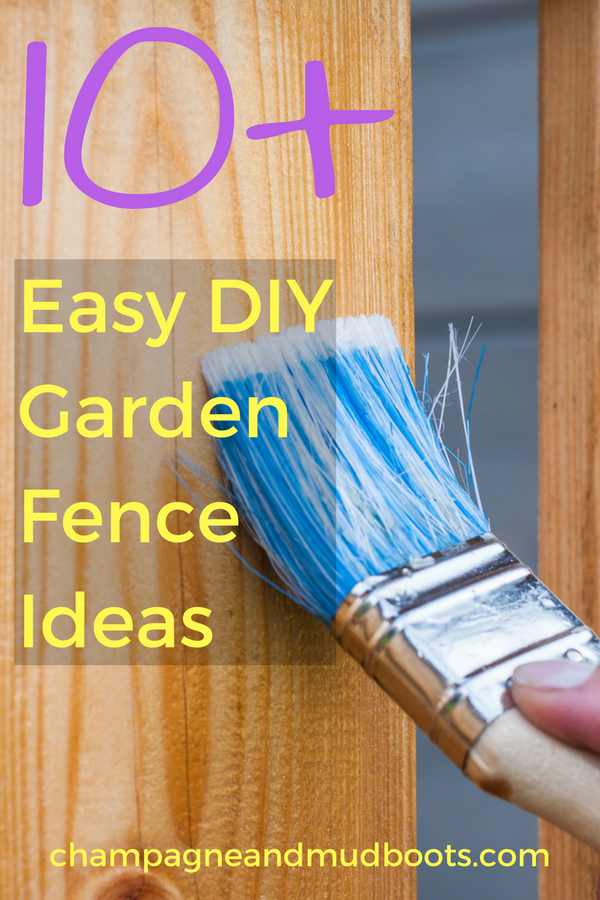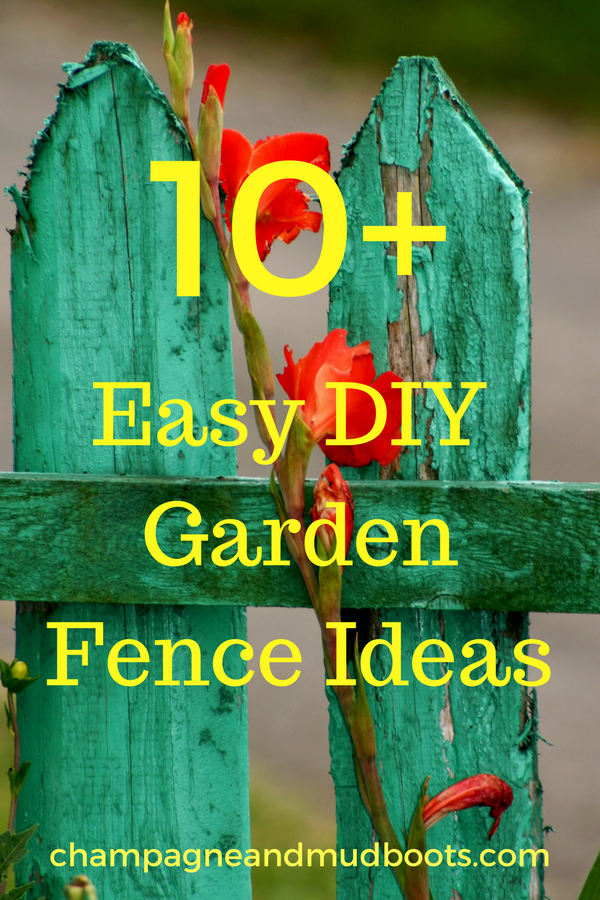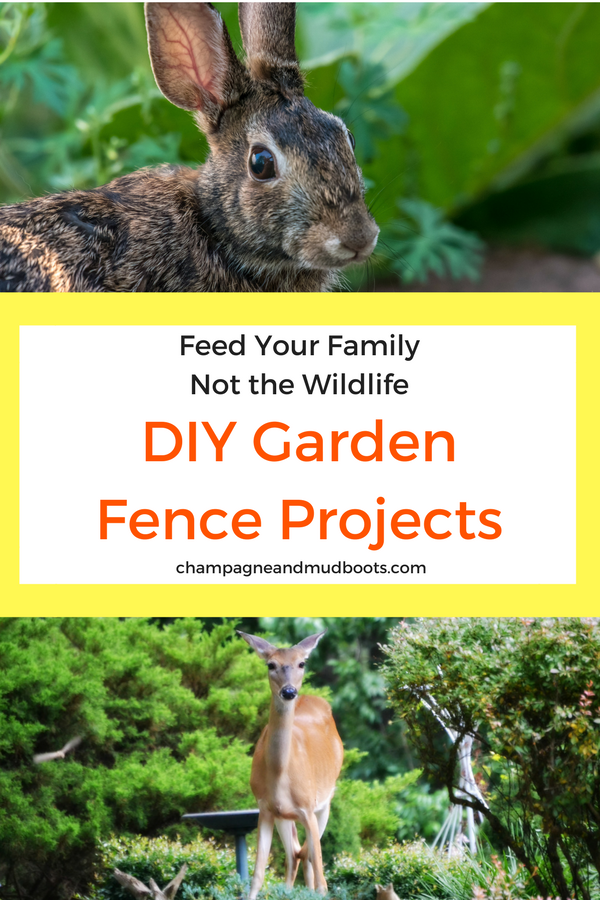
If you are working hard in your garden all season long, it goes without saying that you want to protect the literal fruits of your labor. It is the ultimate frustration to be planting and pulling weeds, only to have little Peter Rabbit come and eat your veggies! Therefore, easy DIY garden fence ideas is something most gardeners need in their lives.
Purpose

The type of fencing you require often depends on what you want to keep out. Is it the cute little cottontail bunnies, deer that will jump over short fences, chickens scratching all your plants up, dogs digging in the dirt, children crushing your tomatoes, or maybe you just like the idea of a sectioned-off garden? Once you’ve established what your fence needs are, you can concentrate on other aspects.
Cost
As most homesteaders with endless projects know, the next question is often, “how much will this cost?” You can certainly go all-out and have someone build a fence for you, or you can scavenge for materials either on your property or through local sources such as Craigslist.
A lot of the cost will depend on the size of fence you require. You may be able to find a few pallets for free, but if you want 40 matching pallets, you may end up having to pay some amount for them- possibly in the range of $5-7 a pallet.
Time is certainly a factor too, since being able to wait and find just the right ‘deal’ on supplies could save you a substantial amount. Don’t forget that time is money! If you save $100 but it takes you three full weekends to build, is that really the best use of your time? Is it better spent using that time to make $200?
Beauty
A factor in the cost may also come down to aesthetics. This consideration holds some value, as some won’t enjoy or use the space if they don’t like the look of it. It needs to be something you will appreciate. Do you want what most people would consider an attractive fence, or is it serving a strictly-utilitarian function? Blocking off an area isn’t that difficult, but it becomes a little more complicated if you want it to look pleasing to the eye and fit within a tight budget.
Placement
You should also consider the permanence of the fence. Do you want to be able to easily deconstruct and move the fence if you change garden location or size, or is this something that needs to be a more permanent heavy-duty structure that is built to last in the one location? If you’re not certain, don’t make a permanent error! Throw some cheap welded wire or something around some t-posts for a season, and see if that’s the size space you want. If it is, tear it down next winter and rebuild it with the materials you really want to use in the ideal dimensions you figured out during that time.
Options
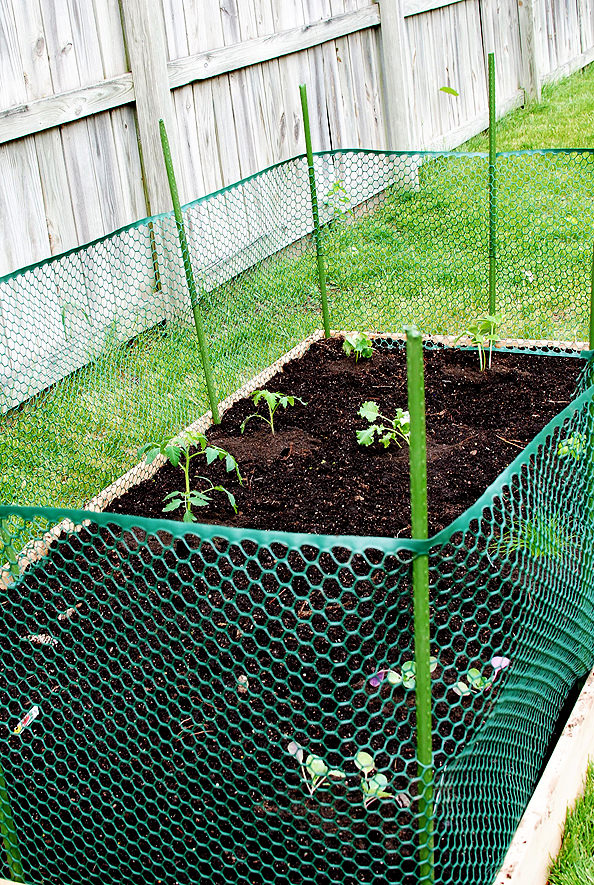
Photo by Iowa Girl Eats
I placed this option first as a reminder that you don’t have to over-engineer the whole fence concept. If all you need is a simple barrier, this option from Iowa Girl Eats saves both time and money.
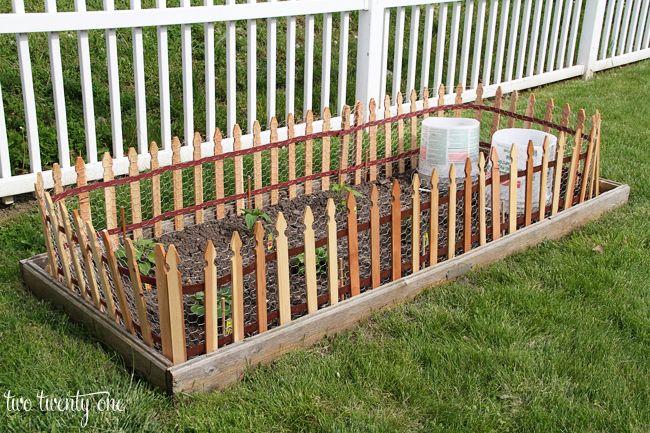
Photo by twotwentyone.net
If you need a low, simple, and very cute little fence, check out the tutorial at twotwentyone. The fencing comes in a roll, so you don’t even need power tools to setup a serviceable fence.
You could even paint it white to give it the ‘little white picket fence’ look, or bright vibrant colors for a cheery garden.
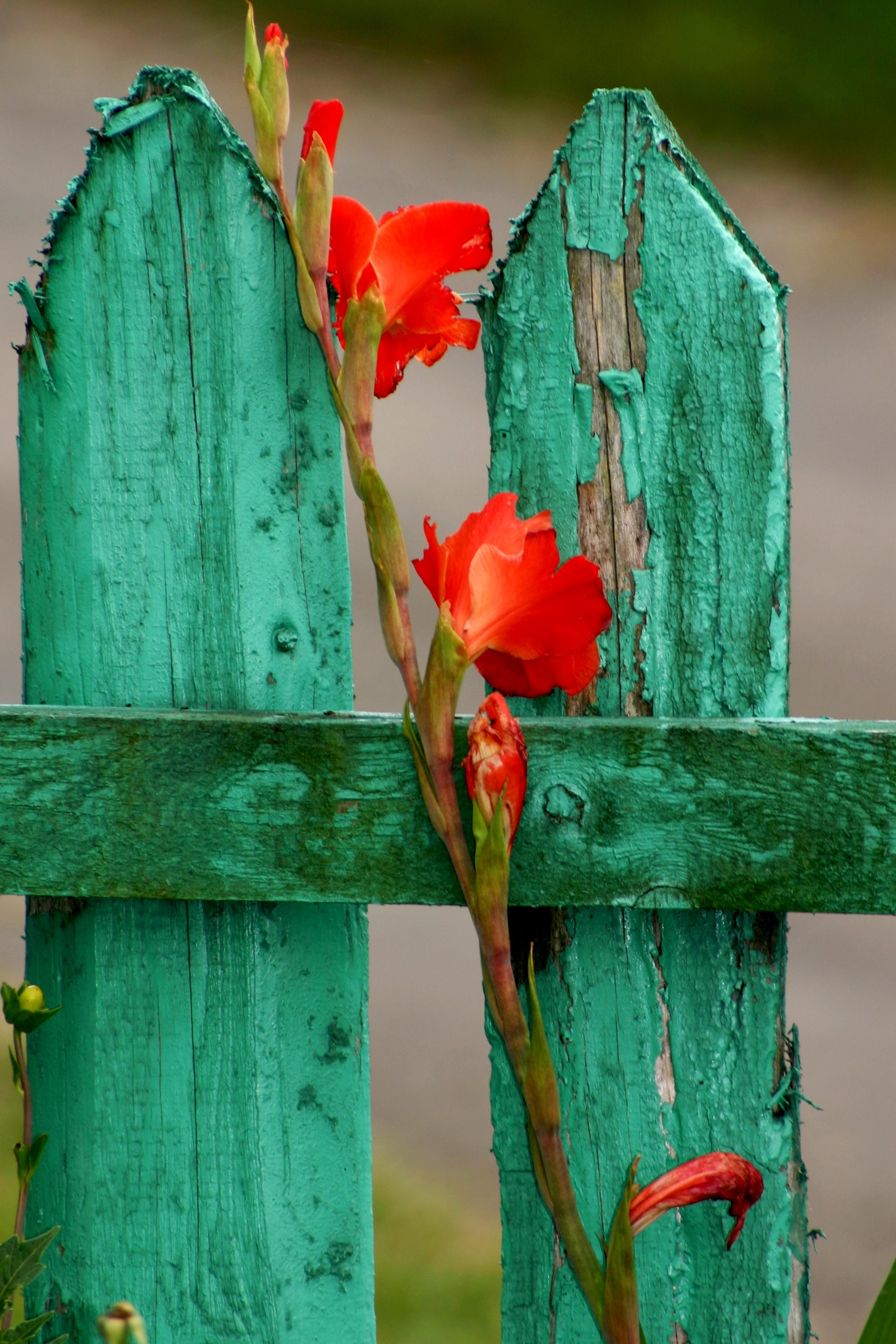
Don’t be afraid to think outside the box on colors like this faded turquoise fence.
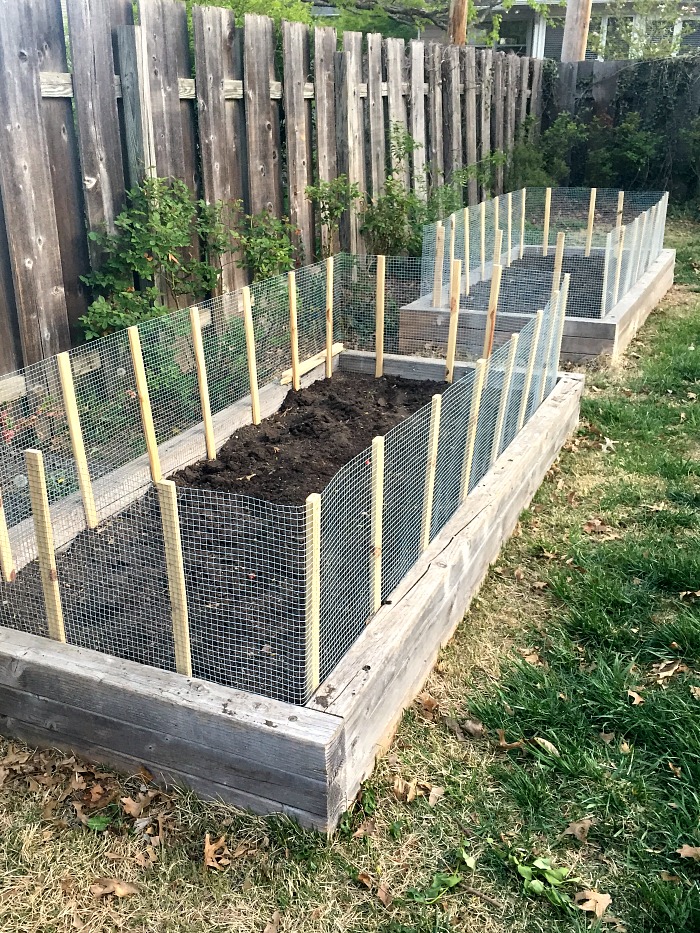
Photo by Urbanacres
A similar take on the short fence without the picket shape is this easy fence by Urbanacres. It is especially well suited to raised beds. Fences may be necessary around the garden depending on your individual needs, but remember you have to harvest around them, which means bending over and more strain on your back.
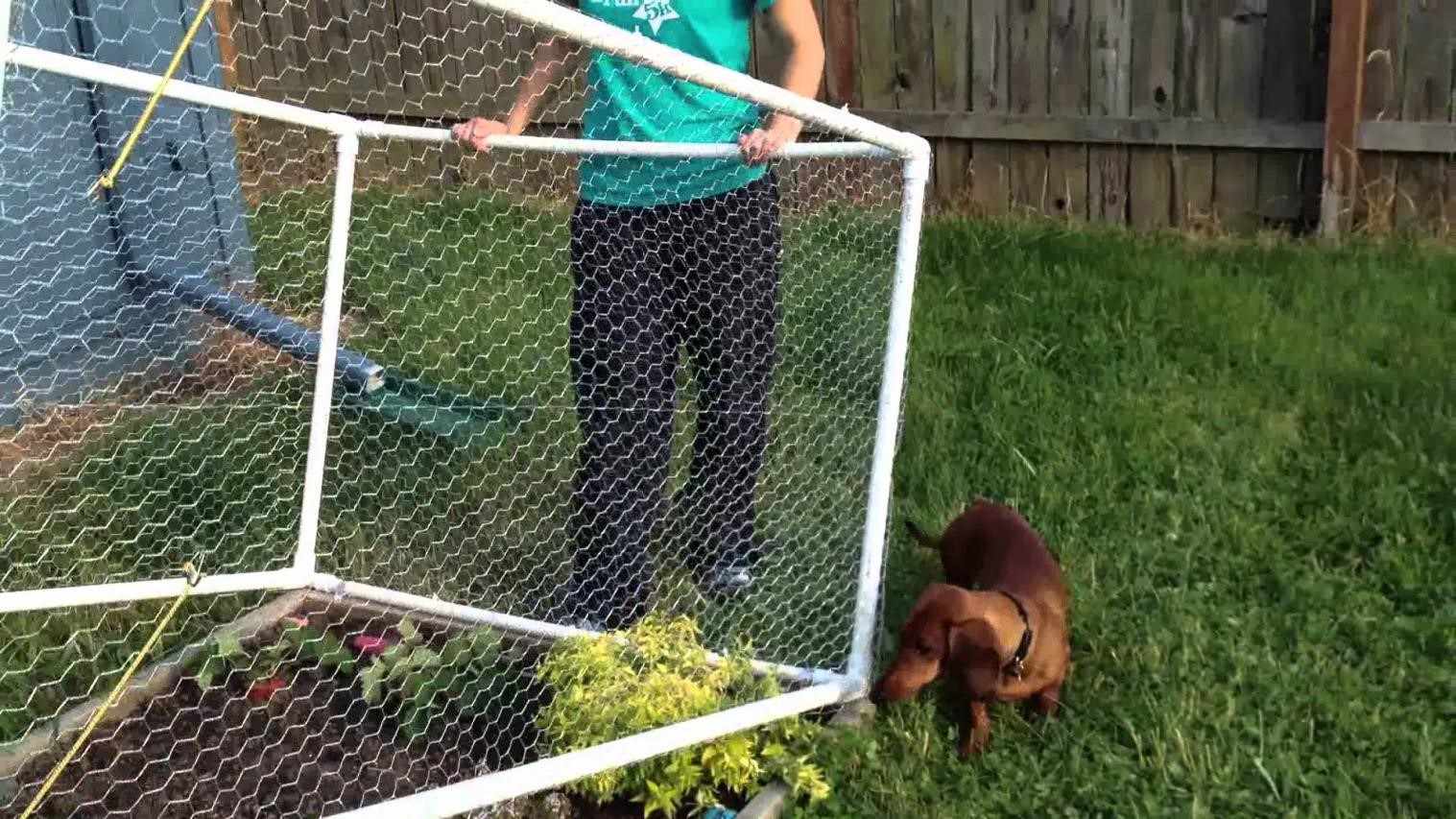
Photo by Cozy-Decor
This video shows the above PVC fence on hinges that allows access when you need it without harvesting over the top of a fence. It was designed to keep out the cute offender in the photo!
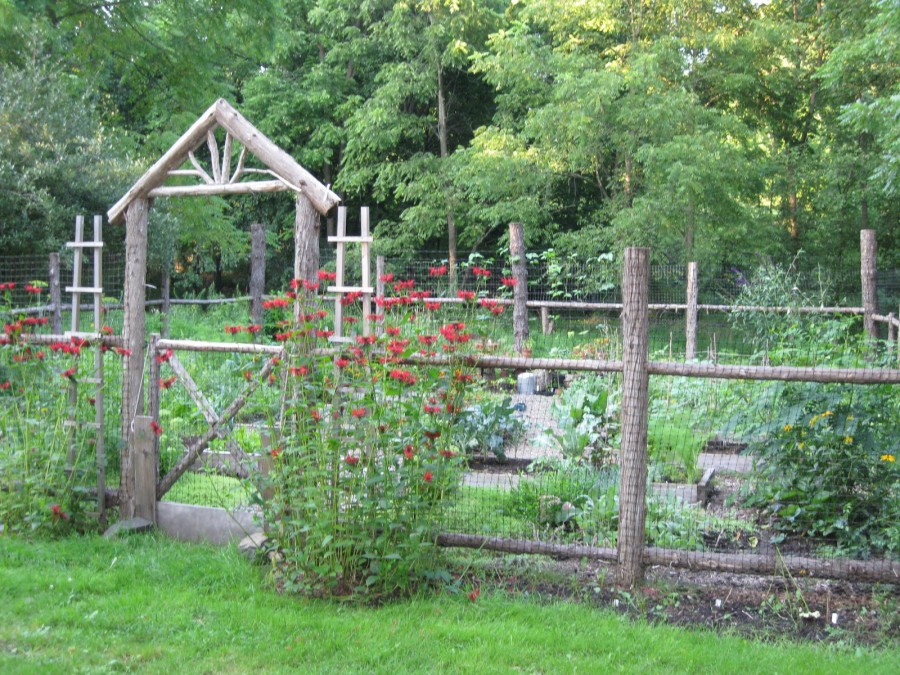
Photo by The Art of Doing Stuff
This fence from The Art of Doing Stuff doesn’t have a tutorial, but I think it’s a great inspiration piece of using natural materials to create fencing. If you have a wooded property or access to trees this can be a great source of free material.
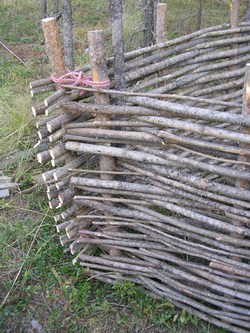
Photo by Forgotten Way Farms
Wattle is another ‘au-naturel’ fencing method. Forgotten Way Farms gives an excellent tutorial on how to DIY this type of fence. They build one that is crazy sturdy, but for shorter fences, you could drive down the main stakes and just weave the green branches between them.
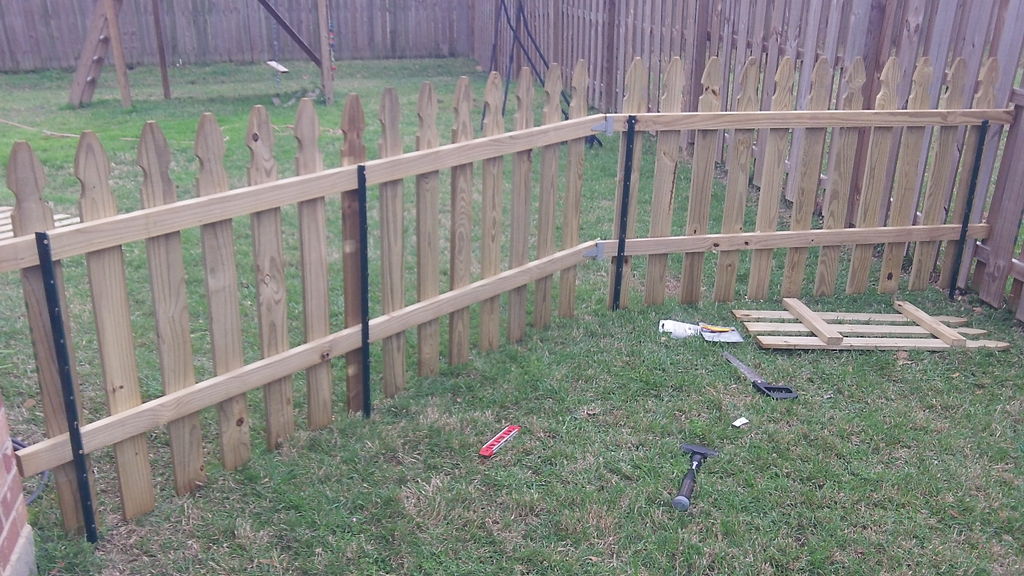
Photo by Instructables
Pre-made fence panels can be screwed into t-posts for a semi-permanent fence. Check out Instructables for step-by-step details on building this fence. Depending on how large an area you have to cover, this provides a very attractive and easy solution.
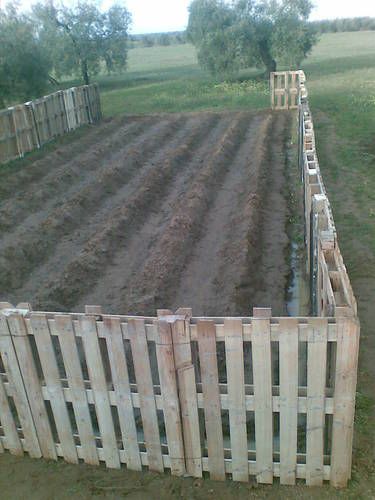
Photo by Bless My Weeds
Pallet fences like this one from Bless My Weeds offer a cost-effective repurposed barrier for your garden. If they are surrounding your garden, they aren’t in the landfill! As mentioned, there is a chance of finding matching free pallets, but I would expect to pay some amount for decent matching ones. Especially with the current popularity of pallet projects. But if you plan on painting them, this may be less of an issue aesthetically if they mostly blend-in together. And what doesn’t blend-in can appear as rustic. Or something.
Pallet fences are often constructed by driving 4x4s or T-posts into the ground and sliding the pallets over the top. You can see in the picture they’ve tied the pallets together as well to provide extra stability. This will also straighten them.
You can also dissemble the pallets and just reuse the wood for a traditional slat fence, but this definitely adds time to the project. Think about pulling the nails out too.
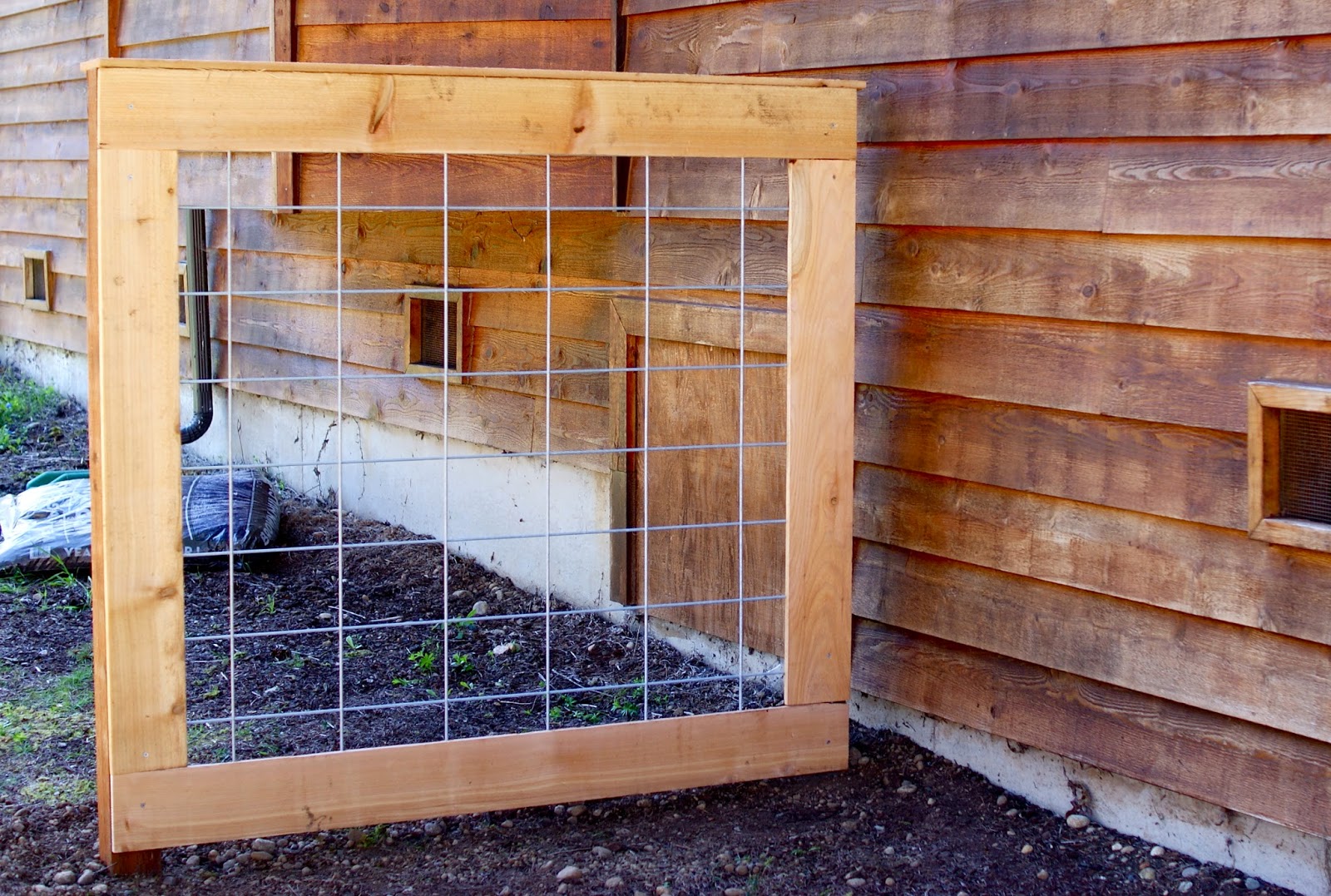
Photo by Three Men and One Lady
A simple hog wire fence can be contructed by framing around the hog wire after it’s attached to the posts. Three Men and One Lady has nice pictures of the process while building their fence.
Lattice could be used in place of hog wire to achieve a similar look, and either one can be placed lengthwise to gain more height if your fence requires it.
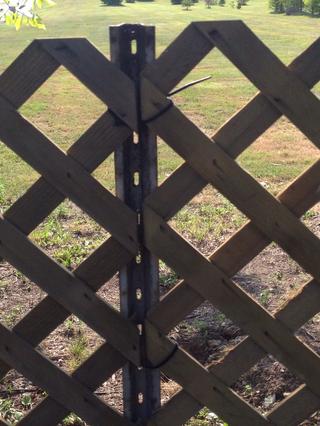
Photo by Snap Guide
If you want, very simple lattice can even be attached to T-posts like this example from Snap Guide.
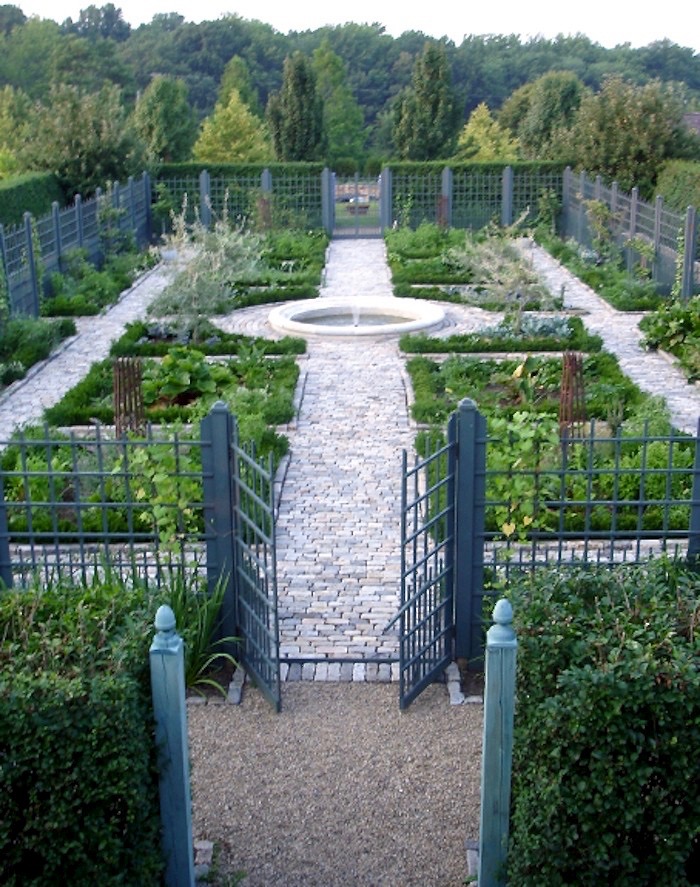
Photo by Gardenista
Now we’re talking. This garden has a multi-tiered defense system against deer with a hedge and a pointy fence. Check out Gardenista for more details on how it was designed.
Deer can also be prevented by deer netting. While not as gorgeous as the fencing above, it provides a cheaper and less-permanent option to protect your veggies. Bear in mind, some deer can clear even a 10-foot fence, so know your local deer (talk with your nearby ag extension office if unknown), and plan accordingly when deer-proofing your garden.
You may be able to sneak by with a shorter fence by placing two layers, trying angled fences, or providing a visual barrier like a hedge around a fence.
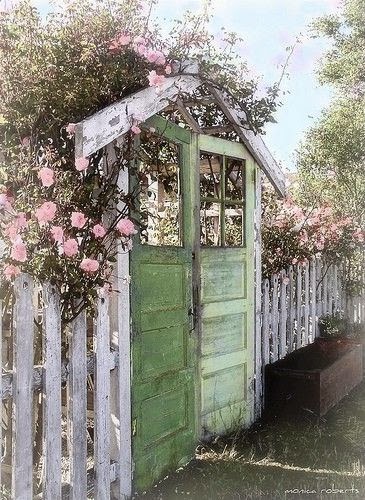
Photo source Dreaming Gardens
This whimsical entrance is my current garden vision as seen on Dreaming Gardens. I want it to withstand alpacas, chickens, kids and keeping out those darn bunnies! I envision a pallet fence with extra wire at the bottom. I’m scoping out the local Habitat for Humanity resale shop for 2 doors to make the gate, and planning on some type of easy vine to climb up the trellis.
I have sold my husband on this vision and I don’t plan on letting my lack of carpentry skills slow me down. Well, realistically, it’s going to slow me down… a lot… but it’s a good starter project to work on them.
It’s actually a perfect project for gaining some skills because it lives outside and is made of used wood. If we screw it up, it’s not going to be some kind of major Type 1 error. Instead, the mistakes just give it a little more ‘character’!
Good luck with all your fence building adventures, may your veggies prosper, and your bunnies find other things to eat! Don’t forget to check out 10 Easy to Grow Vegetables if you need ideas of what to grow in your garden!
